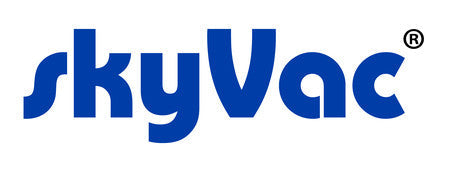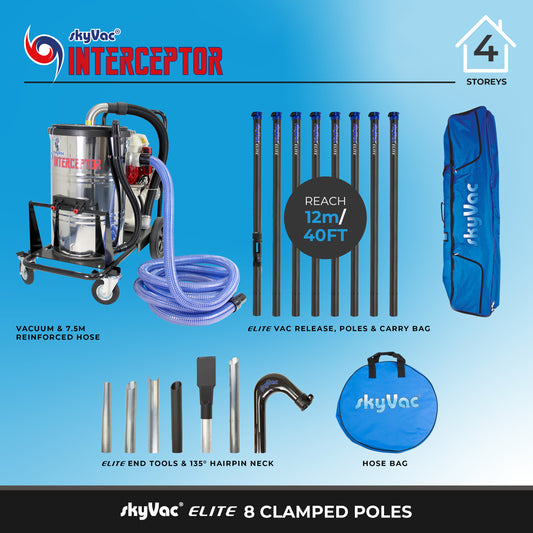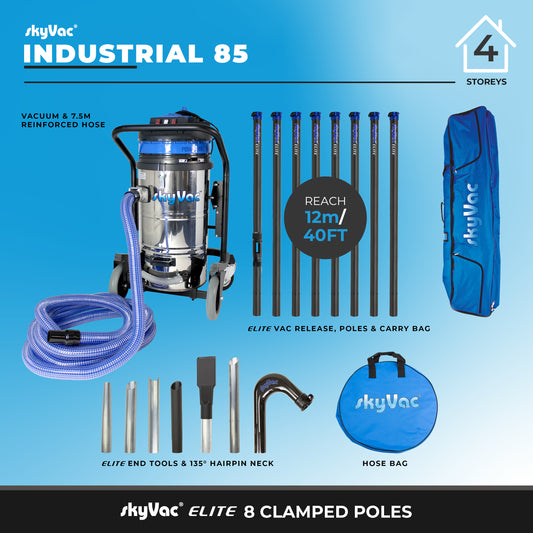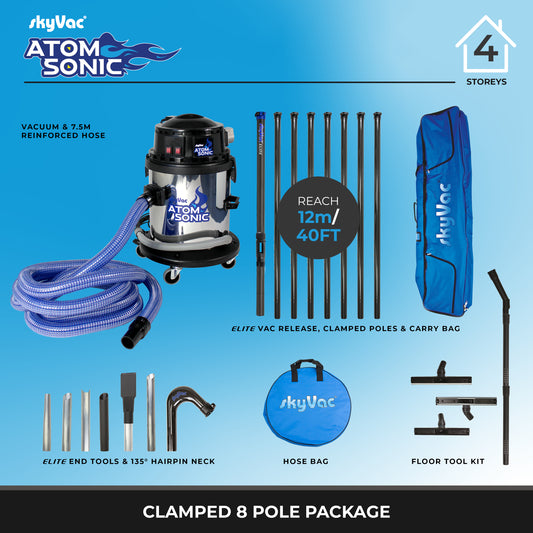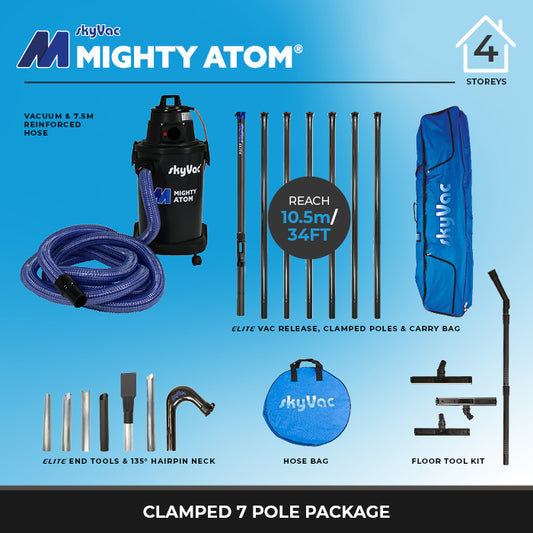Mastering Industrial High Dusting: Safety and Efficiency Tips for 2025
Share
We all know that keeping our facilities clean is important, but sometimes the dirtiest jobs are the ones we can't easily reach. We're talking about the high places – the ceilings, the beams, the tops of lights. Dust and grime love to gather there, and it's not just about looks. It can affect air quality and even be a safety issue. That's why we need to talk about Industrial High Dusting. We'll go over why it's so important and how to do it right, especially as we look towards 2025.
Key Takeaways
- Industrial High Dusting is crucial for improving air quality, reducing fire risks, and maintaining a professional appearance in facilities.
- Using specialized equipment like high-reach poles and vacuum systems allows for safe and efficient cleaning of overhead areas from ground level, eliminating the need for ladders or lifts.
- Establishing a regular cleaning schedule and following safety protocols are vital for effective Industrial High Dusting practices.
Understanding the Importance of Industrial High Dusting
When we talk about industrial environments, dust isn't just an eyesore; it's a serious concern for both safety and operational efficiency. Dust particles, made up of everything from skin cells and fibers to dirt and pollen, are incredibly light. They get stirred up easily by air currents, machinery, or just people moving around. Because they're so light, they tend to drift upwards and settle in places that are really hard to reach – think ceiling beams, ductwork, light fixtures, and rafters.
Why High Dusting Matters for Your Facility
Ignoring these high-up dust collectors can lead to a few problems. For starters, that dust can harbor allergens and even bacteria. When it gets disturbed, it can get back into the air we breathe, potentially causing respiratory issues for employees or visitors. It also creates a fire hazard, especially around electrical equipment or heat sources. Plus, visible dust in high areas just looks bad, giving a poor impression of your facility's upkeep. It’s about more than just appearances; it’s about maintaining a healthy, safe, and professional workspace.
The Science Behind Dust Accumulation in High Places
So, how does all this dust get way up there? It’s a simple matter of physics and airflow. Dust particles, being so small and light, are easily carried by air currents. Your building's HVAC system plays a big role, circulating air and lifting particles. Even natural convection, where warm air rises, carries dust upwards. When these particles enter the air, they eventually slow down and settle. The highest points in a building, often out of the way and rarely cleaned, become natural collection zones. This continuous settling means that even if you clean the lower areas regularly, the dust just keeps accumulating overhead, waiting to be disturbed again. It’s a cycle that requires a specific approach to break.
We need to remember that dust doesn't just stay put. It's constantly moving, and the highest points in our facilities are the ultimate resting places until we actively remove it. This is why a dedicated high dusting strategy is so important for maintaining a clean and safe environment.
Essential Equipment and Techniques for Industrial High Dusting
When we talk about tackling dust in those hard-to-reach places, the right gear makes all the difference. We're not just talking about a quick wipe-down; we're aiming for thorough cleaning that keeps your facility safe and looking its best. This means equipping ourselves with tools that extend our reach without compromising safety or efficiency.
Choosing the Right High-Reach Poles and Attachments
Selecting the proper poles is the first step. For industrial high dusting, we often need poles that can reach significant heights, sometimes up to 40 feet. Lightweight materials like carbon fiber are a game-changer here. They reduce fatigue during long cleaning sessions and offer better control, which is vital when maneuvering attachments in tight or awkward spaces. We look for poles that offer secure locking mechanisms, whether they are telescopic or clamped, to maintain stability at full extension. The variety of attachments available is also key. We need brushes for dry dusting, often with static-dissipating properties to attract dust, and microfiber sleeves for more delicate surfaces. For intricate areas like ductwork or pipes, specialized angled or flexible tools are indispensable. Having a system that allows for quick changes between these attachments means we can adapt to different cleaning challenges on the fly.
Leveraging Vacuum Systems for Dust-Free Removal
Simply pushing dust around isn't the goal; we want to capture it. This is where vacuum systems become incredibly important for industrial high dusting. Using a powerful vacuum, especially one equipped with a HEPA filter, is critical for containing fine dust particles and preventing them from becoming airborne again. This not only improves indoor air quality but also reduces the risk of respiratory issues for workers and occupants. We connect our high-reach poles and specialized vacuum heads directly to these systems. The vacuum heads are designed to fit snugly around pipes, vents, and other surfaces, ensuring maximum dust capture. This vacuum-assisted approach is far more effective than dry sweeping or dusting alone, especially in environments where dust accumulation can be a fire hazard or an allergen source. It’s about a clean removal process, leaving the air cleaner and surfaces truly dust-free. Learn more about safer and more efficient high dusting.
Working from the ground with specialized poles and vacuums means we can avoid the risks associated with ladders and scaffolding. This not only protects our team but also keeps operations running smoothly without the need for extensive setup or downtime.
Here’s a quick rundown of what we consider:
- Pole Material: Carbon fiber for lightweight strength.
- Attachment Variety: Brushes, microfiber sleeves, and specialized angled tools.
- Vacuum Integration: HEPA-filtered systems for complete dust capture.
- Safety Features: Secure pole locks and ground-level operation.
Best Practices for Safe and Efficient Industrial High Dusting
When we talk about keeping our industrial spaces clean and safe, especially those hard-to-reach spots, having solid best practices in place is key. It’s not just about making things look good; it’s about preventing hazards and maintaining a healthy environment for everyone. We need to be smart about how we approach high dusting to get the job done right.
Implementing Safety Protocols for Overhead Cleaning
Safety first, always. When we're working overhead, we need to be extra careful. This means making sure we're using the right gear and following procedures to avoid accidents. Think about it: working with long poles can be tricky, and you don't want anything falling or anyone losing their balance.
- Personal Protective Equipment (PPE): Always wear safety glasses to protect your eyes from any falling debris. Depending on the situation, gloves and even a dust mask might be a good idea.
- Clear the Area: Before you start, make sure the area below is clear of people and sensitive equipment. Use caution tape if necessary to keep unauthorized personnel out.
- Pole Stability: Be mindful of how you're handling the poles. Ensure they are securely connected and that you have a stable stance. Avoid overextending yourself or the equipment.
- Electrical Safety: Be aware of any electrical fixtures, wiring, or machinery in the area. Never use conductive poles near live electrical sources.
Working at height, even with specialized equipment, carries inherent risks. A thorough understanding of your equipment's limitations and a commitment to safety protocols can prevent injuries and ensure a smooth cleaning process.
Optimizing Your Industrial High Dusting Schedule
To keep things running efficiently, we need a good schedule for our high dusting tasks. This isn't a 'when we get around to it' kind of job. Regular cleaning prevents major buildup, which makes future cleanings easier and safer. Plus, it helps maintain air quality and reduces fire risks.
- Frequency: How often you need to dust depends on your facility. Look at how much dust accumulates and consider factors like production processes or outdoor air quality. A good starting point might be quarterly, but adjust based on your observations.
- Timing: It’s often best to schedule high dusting during off-peak hours or when the facility is unoccupied. This minimizes disruption to operations and prevents dust from settling on active workspaces.
- Equipment Maintenance: Keep your high dusting equipment in top shape. Regularly check poles for damage, clean attachments, and ensure vacuum systems are functioning correctly. Proper maintenance is key to both safety and efficiency. We found that keeping our poles clean and our vacuums serviced really makes a difference in how well the job gets done.
Keeping industrial spaces clean and safe is super important, especially when dealing with lots of dust. Want to learn more about keeping your workplace dust-free and running smoothly? Visit our website today for expert advice and top-notch equipment!
Wrapping Up Our High Dusting Journey
So, we've covered a lot about tackling those high-up dust bunnies and grime. It’s clear that keeping these areas clean isn't just about looks; it’s about safety, air quality, and making sure our workplaces are up to par. Using the right gear, like the systems from SkyVac and Clean Direct, really makes a difference. It means we can get the job done safely from the ground, saving time and avoiding the risks that come with ladders or lifts. By sticking to good practices and using the right tools, we can all manage industrial high dusting more effectively in 2025 and beyond. Let’s keep those high places clean and our environments healthy.
Frequently Asked Questions
How high can your cleaning poles reach, and do we need lifts?
We can reach really high places, like up to 40 feet, using our special poles. This means we can clean things like ceilings, lights, and vents without needing any ladders or lifts. It's all done safely from the ground.
What kinds of surfaces can your tools clean up high?
Our high dusting tools are designed to clean all sorts of surfaces way up high. This includes metal pipes, air ducts, beams, lights, signs, and vents. We have different tools that can get into tight spots and clean around tricky areas.
Are your high dusting tools safe for sensitive areas like food production facilities?
Yes, we can use special tools and vacuums that are safe for places like food areas or clean rooms. We use washable microfiber cloths and vacuums with special filters to make sure everything stays clean and meets the rules.
